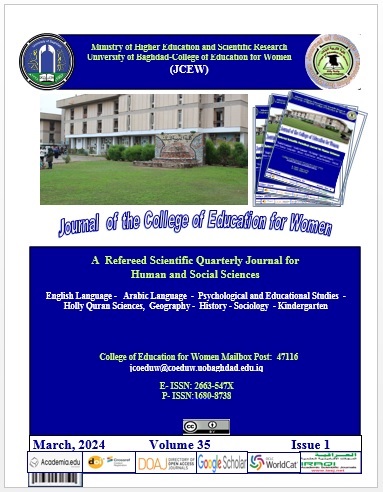A Study of the Verbal and Non Verbal Signs on National Islamic Flags
DOI:
https://doi.org/10.36231/coedw.v35i1.1720Keywords:
Connotations, Denotation, Flags, Semiotics, SignsAbstract
Every autonomous country has a unique national flag that represents its identity and serves as a symbol of nationalism. This "rectangular piece of fabric of distinctive design that is used as a symbol of a nation), as a signaling device, or as a decoration" is the literal definition of a flag according to the Merriam Webster Dictionary. However, this item of clothing serves a crucial purpose in solidifying national identity between citizens. For example, its frequent use in rituals and allegiance pledges by the general public and its design, which incorporates elements of ethnic and religious significance. This study focuses on the Islamic identity revealed in the verbal and nonverbal signs of national flags. Consequently, it tries to answer these main questions: What are the symbols seen on Islamic country flags? What are the various connotative meanings of those signs and how do they show the country's Islamic identity? What importance do those indications have for Muslims? How those signals are inspired by the Holy Quran. The aim of the study is to find out the connotative meaning of each sign with the messages it conveys to confirm the Islamic identity in thirty two national Islamic flags. The adopted model is based on the field of semiotic science, i.e., it clarifies and explains signs by using Barthe’s model(1977a) (1977b) of signs and meaning. The nature of the study is a qualitative one depending on the content of the data; nevertheless, there has been some statistics to support the findings.
Downloads
Published
Issue
Section
License
![]()
All articles published in Journal of College of Education for Women are licensed under a Creative Commons Attribution 4.0 International License.











